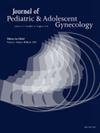42. Fertility intentions among transgender and non-binary youth
IF 1.8
4区 医学
Q3 OBSTETRICS & GYNECOLOGY
引用次数: 0
Abstract
Background
Transgender and non-binary individuals may experience gender dysphoria, distress associated with the incongruence between one's gender identity and sex assigned at birth. Gender-affirming treatments are used to alleviate gender dysphoria by facilitating physical changes more closely aligned with one's gender identity but may affect fertility. Research investigating the fertility intentions of transgender and non-binary adolescents is limited, with no studies of non-binary youth. Our objective was to assess fertility intentions and future parenting goals in a cohort of gender diverse adolescents seen in a multidisciplinary pediatric gender program and assess how those goals differ by gender identity.
Methods
This is a retrospective chart review of all gender diverse patients who were seen at the Nemours Gender Wellness Program from 2015-2020. Abstracted data include patient demographics, fertility intentions, referrals, and procedures. Descriptive statistical analysis was performed using frequency counts, percentages, medians and standard deviations. Comparisons were made between transgender and gender non-binary patients. Categorical variables were compared using chi-square and Fisher exact tests; continual variables were compared with t-tests or mann-whitney testing as appropriate for non-parametric variables.
Results
Of the 189 included patients, most were White (83%) and non-Hispanic (90%). Participant ages ranged from 5-18 years, with a median of 15.00 (SD 2.5) years. 168 (88%) individuals identified as transgender and 21 (11%) as non-binary. Of the participants that discussed fertility intention during their visit, more transgender adolescents were interested in future parenting than non-binary youth (35% vs. 20%, p=0.01). The majority of participants from both groups did not express any interest in current parenting (100%), future pregnancy (95%) or desire for biological children (59%). However, 31% of participants were interested in a Reproductive Endocrinology and Infertility consult and/or fertility preservation procedure, with no differences between groups.
Conclusions
Within our cohort, transgender individuals were more likely than non-binary individuals to express an interest in future parenting. Despite this, most patients in both groups were not interested in biological children or fertility preservation. Understanding fertility intentions among gender diverse adolescents can help inform counseling on gender-affirming care and improve treatment strategies for this population.
42. 跨性别和非二元青年的生育意愿
跨性别者和非二元性别者可能会经历性别焦虑,与性别认同和出生时的性别分配不一致有关的痛苦。性别确认治疗是通过促进身体变化更接近一个人的性别认同,但可能影响生育能力,来缓解性别焦虑。关于跨性别和非二元青少年生育意愿的研究是有限的,没有关于非二元青少年的研究。我们的目的是评估在多学科儿科性别项目中观察到的一组性别不同的青少年的生育意愿和未来育儿目标,并评估这些目标如何因性别认同而不同。方法回顾性分析2015-2020年在Nemours性别健康项目就诊的所有不同性别的患者。抽象数据包括患者人口统计、生育意向、转诊和手术。使用频率计数、百分比、中位数和标准差进行描述性统计分析。对跨性别患者和非二元性别患者进行比较。分类变量比较采用卡方检验和Fisher精确检验;对于非参数变量,将连续变量与t检验或mann-whitney检验进行比较。结果在189例纳入的患者中,大多数是白人(83%)和非西班牙裔(90%)。参与者年龄范围为5-18岁,中位数为15.00 (SD 2.5)岁。168人(88%)为跨性别者,21人(11%)为非二元性别者。在访问期间讨论生育意向的参与者中,跨性别青少年对未来育儿感兴趣的比例高于非二元性别青少年(35%比20%,p=0.01)。两组的大多数参与者都没有表现出对当前养育子女(100%)、未来怀孕(95%)或想要亲生孩子(59%)的任何兴趣。然而,31%的参与者对生殖内分泌和不孕症咨询和/或生育能力保存程序感兴趣,两组之间没有差异。在我们的队列中,跨性别者比非双性恋者更有可能表达对未来养育子女的兴趣。尽管如此,两组中的大多数患者对生儿育女或生育能力保存不感兴趣。了解不同性别青少年的生育意向可以帮助为性别确认护理提供咨询,并改善针对这一人群的治疗策略。
本文章由计算机程序翻译,如有差异,请以英文原文为准。
求助全文
约1分钟内获得全文
求助全文
来源期刊
CiteScore
3.90
自引率
11.10%
发文量
251
审稿时长
57 days
期刊介绍:
Journal of Pediatric and Adolescent Gynecology includes all aspects of clinical and basic science research in pediatric and adolescent gynecology. The Journal draws on expertise from a variety of disciplines including pediatrics, obstetrics and gynecology, reproduction and gynecology, reproductive and pediatric endocrinology, genetics, and molecular biology.
The Journal of Pediatric and Adolescent Gynecology features original studies, review articles, book and literature reviews, letters to the editor, and communications in brief. It is an essential resource for the libraries of OB/GYN specialists, as well as pediatricians and primary care physicians.

 求助内容:
求助内容: 应助结果提醒方式:
应助结果提醒方式:


